Taboon, a soft and chewy Palestinian flatbread, has distinct earthy flavor that comes from the traditional oven in which its historically made. Learn to make this simple yet incredibly special flatbread, no taboon oven needed!
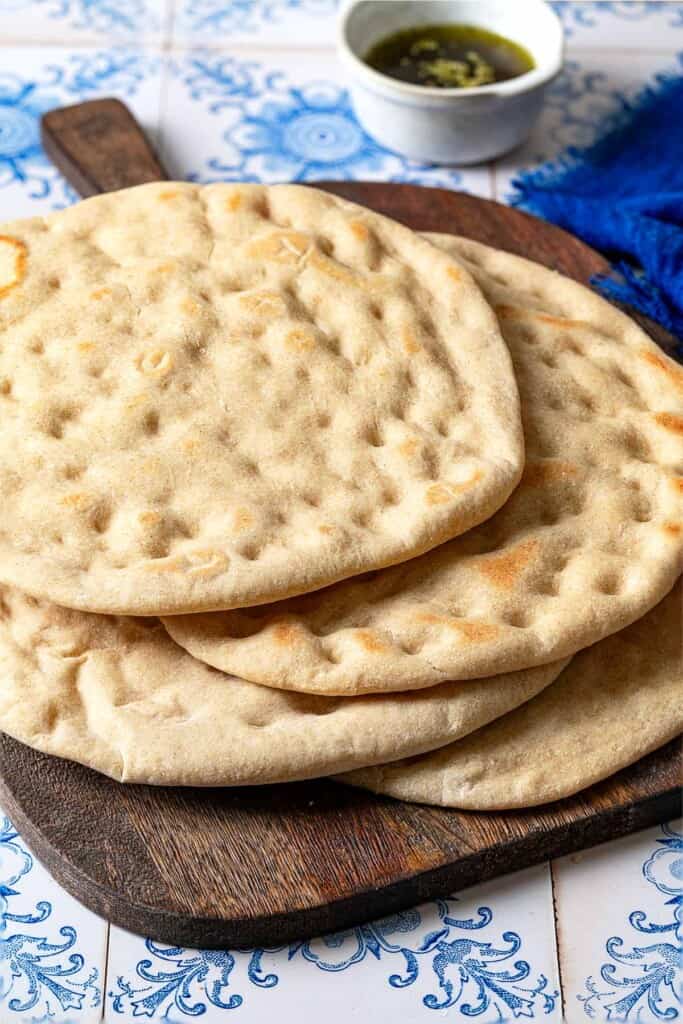
Taboon is a traditional Palestinian bread similar to pita but without a hollow pocket in the center. While it varies in size, it is always round and known for its signature dimples and distinct flavor.
Sharing and breaking bread is a significant gesture of hospitality and community in many Middle Eastern and Mediterranean cultures. In Palestine almost all meals, from lighter fare like Lentil Salad with Roasted Eggplant and Pomegranate Dressing to hearty winter stews, are served family-style and accompanied with warm breads such as Taboon.
While taboon consists of simple bread ingredients—flour, salt, sugar, and water. It’s the traditional oven made from pebbles, mud, and olive branches that gives taboon its distinct earthy flavor. Although you can find taboon bread all over Palestine and often made in commercial ovens, it’s very difficult to capture true taboon’s unique flavor in a standard or commercial oven.
In this taboon bread recipe, I’ll show you how to recreate its signature flavor using your home oven and small stones or river rocks foraged from your local garden or hardware store.
Table of Contents
- What Is Taboon? History and Cultural Significance
- Rocks and Essential Taboon Ingredients
- How to use River Rocks to Mimic a Taboon Oven (Optional)
- How to Make Taboon Bread
- What to Serve with Taboon
- More Bread Recipes
- Save When You Bundle Our Best-Selling Olive Oil Collection!
- Taboon (Palestinian Flatbread) Recipe
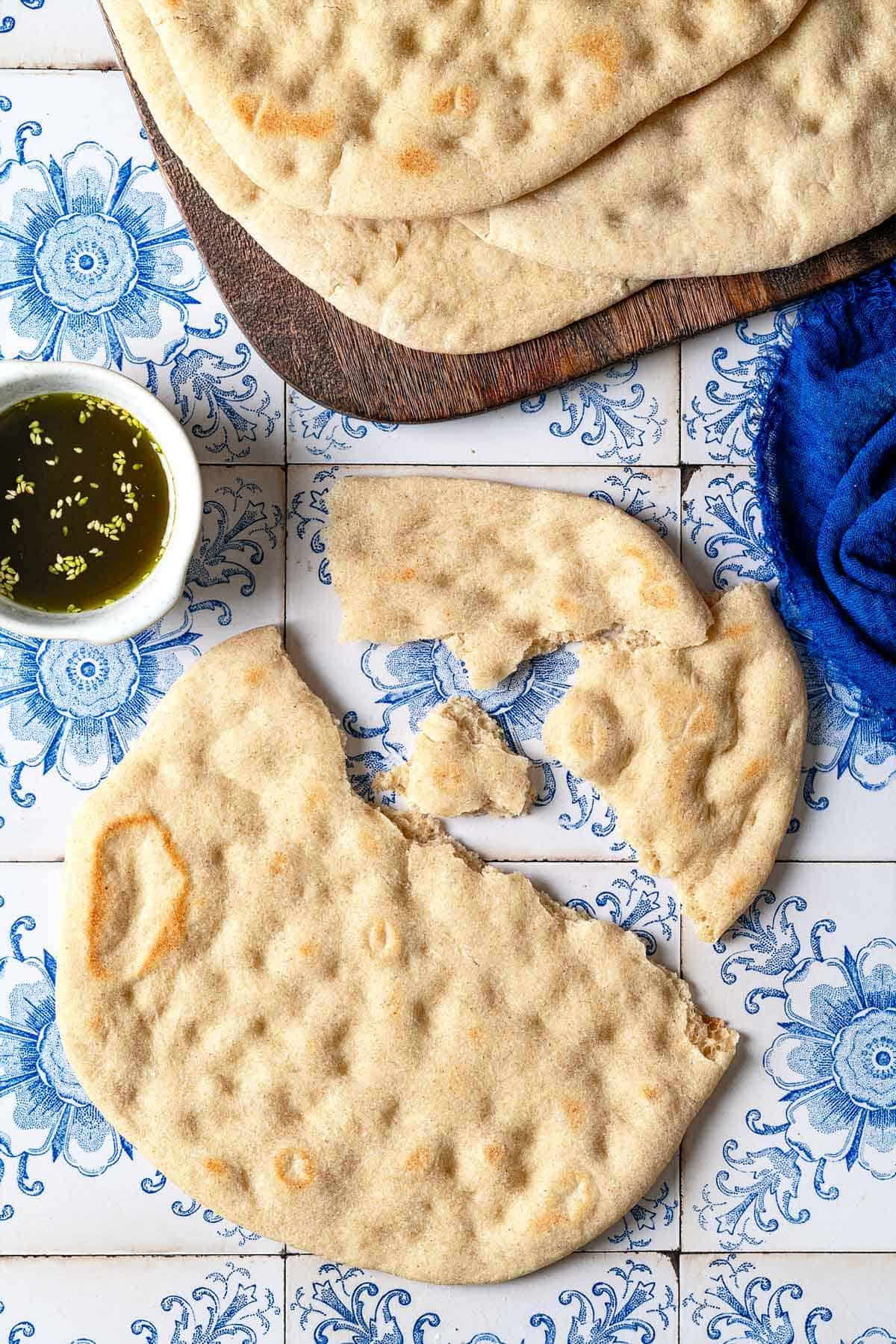
What Is Taboon? History and Cultural Significance
Taboon bread gets its name from the “taboon” oven where it’s baked, which resembles a small room not unlike the traditional tonir oven used to cook lavash. What makes the taboon oven so special is the use of olive branches, mud and pebbles or rocks. This design allows for baking at a high temperature, which results in quick and even cooking, along with a unique and delicious flavor.
The taboon technique, recipe, and oven has been in Palestinian families for generations. Both the oven and its bread hold significant cultural values to Palestinians as an essential part of our culinary heritage.
Palestinians take so much pride in the making of this bread. Before it became commercialized and baked in large commercial ovens, it was a craft mastered in the countryside and villages of Palestine, where women often prepared the taboon early morning so the warm bread could be enjoyed for breakfast and meals throughout the day.
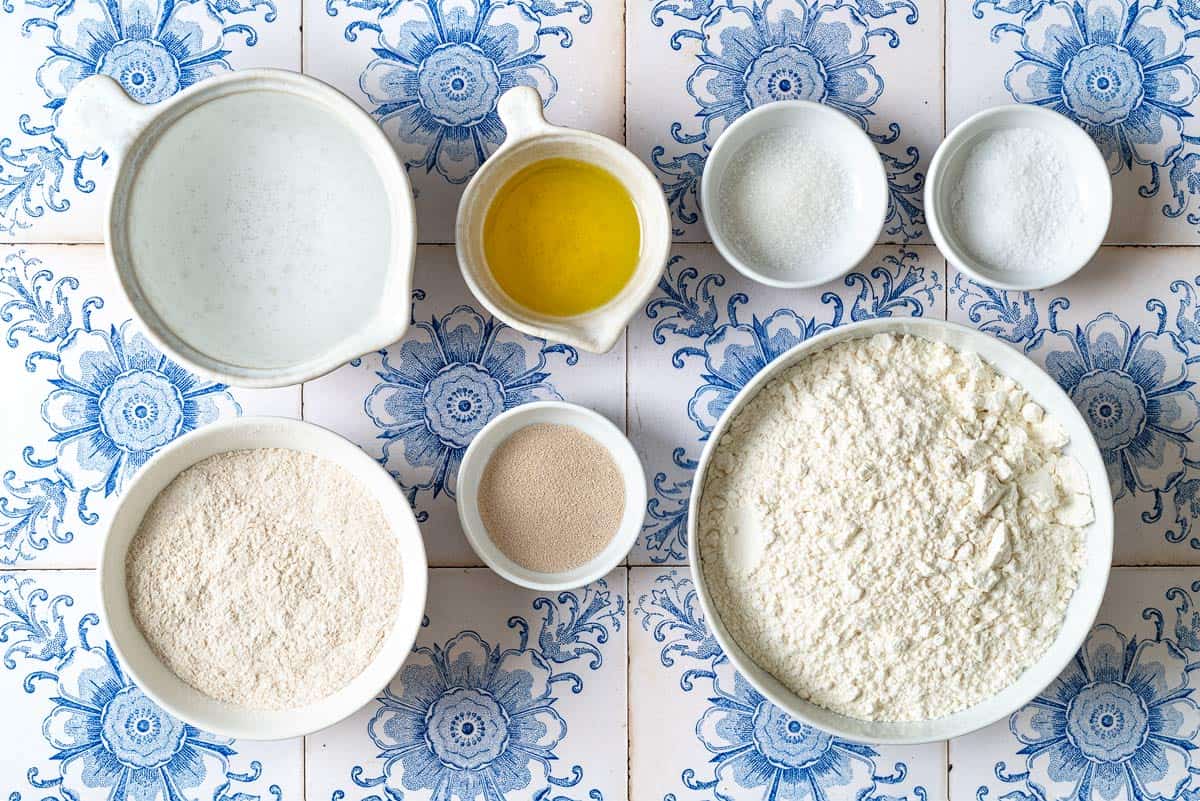
Rocks and Essential Taboon Ingredients
Taboon bread consists of simple bread ingredients which are kneaded and left to rise, not unlike any standard bread recipe. What makes it unique is the oven, which I’ve recreated in this recipe. Here’s what you’ll need:
- Flour: Whole wheat flour adds a nutty flavor, all-purpose flour gives a fluffy texture. Some cooks like to mix both white and wheat flour and some even make the bread with just whole wheat.
- Extra virgin olive oil: High quality extra virgin olive oil adds not only a delicious and iconic flavor to the bread but also helps the bread to stay soft and chewy.
- Instant yeast: Traditionally, cooks saved a small piece of dough to make the next day’s batch. Something similar to a sourdough starter. But now that commercial yeast is widely available and easy to use it has become a go-to option for the home cook. Don’t forget to check the expiration date on your yeast to ensure it’s fresh.
- Sugar: Helps feed the yeast and make it frothy.
- Salt: Salt is added to flavor the dough, a little bit goes a long way.
- River rocks or pebbles (optional): River rocks (about 1 to 2 inches) or pebbles (about the size of a marble) are used to mimic the dimples on taboon bread and give the bread a slightly earthy flavor. You can find them at homeware and garden stores. Just make sure they are natural and free of colors and chemicals. Alternatively, you can use your fingers to make similar indentations.
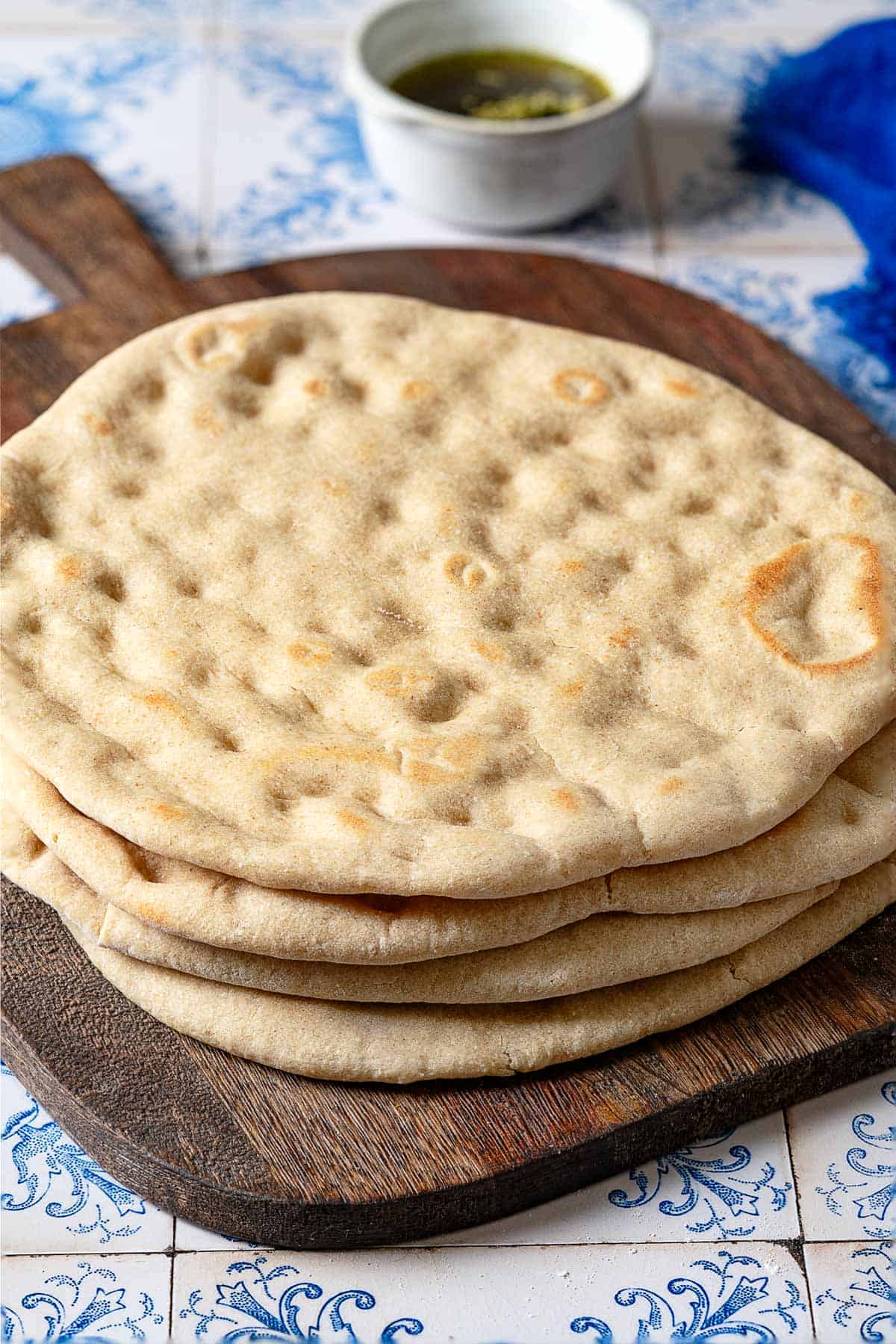
How to use River Rocks to Mimic a Taboon Oven (Optional)
The first step to make taboon bread is to get your taboon oven ready. This is a step you want to take in advance, then you can use the rocks over and over again.
- Prepare the stones: Wash the stones the night before you plan to bake really well with soap and warm water.
- Dry: Set aside in one layer to completely dry. Any moisture in the rocks can cause them to crack and pop once exposed to heat. (To reuse the rocks: Wipe them from any flour residue or dough that might have gotten stuck on them during the baking process.)
- Heat the rocks: Place the rocks on a baking sheet and then place the baking sheet in a 500°F to heat up for the dough.
How to Make Taboon Bread
Once your oven is ready, begin making the dough. Here’s how to do it:
Make and Proof the Dough
- Activate the yeast. In a measuring cup, stir together 1 1/3 cup warm water, 2 1/2 teaspoons instant yeast, and 1 1/2 teaspoons sugar. Set aside until the mixture is frothy, about 10 minutes.
- Make the dough. Set up a a stand mixer with the dough hook. Use a sifter or fine mesh strainer to sift in 3 cups all purpose flour, 1 cup whole wheat flour, and 1 1/2 teaspoons of salt, tapping with the palm of your hand until they fall in the bowl. Add 2 tablespoons of olive oil and mix on low speed to combine. With the mixer on low speed, gradually add the yeast mixture and knead until the dough is soft and a bit sticky, 6-10 minutes.
- Proof the dough. Transfer the dough to a bowl and brush it with one teaspoon of extra virgin olive oil. Cover with a damp towel and leave it in a warm spot to proof and double in size, 60 to 90 minutes.
Divide and Shape the Dough
- Get ready to bake. Remove the top rack so you can easily access the center rack of your oven once it’s hot. Preheat the oven to 500°F, or the highest temperature the oven can go. Place the cleaned and completely dried rocks or pebbles on a baking sheet or tray and bake for 30 minutes to heat the rocks.
- Rest the dough. Once your dough has doubled in size, cut into 4 equal portions (about 200 grams each). Shape each portion into a ball, cover with a damp towel, and set aside to rest for 10 minutes.
- Roll the dough. Lightly dust your work surface with flour. Use a rolling pin to roll out one piece of dough at a time into a circle shape about 10 x 10-inches.
Bake the Dough
- Bake the dough. Use your hands to create dimples in the dough, then carefully transfer the onto the hot rocks (or directly onto the hot pan if you’re not using the rocks) and bake for 5 minutes until slightly golden and the dimples form.
- Cover and repeat. Use tongs to carefully transfer the cooked bread to a large pan and cover with a dry kitchen towel to trap the heat, ensuring the bread stays soft and pliable. Repeat with the remaining pieces, cooking one at a time.
- Enjoy or store. Enjoy immediately, or wrap and store on your counter for 3 days or freezer for up to 1 month.
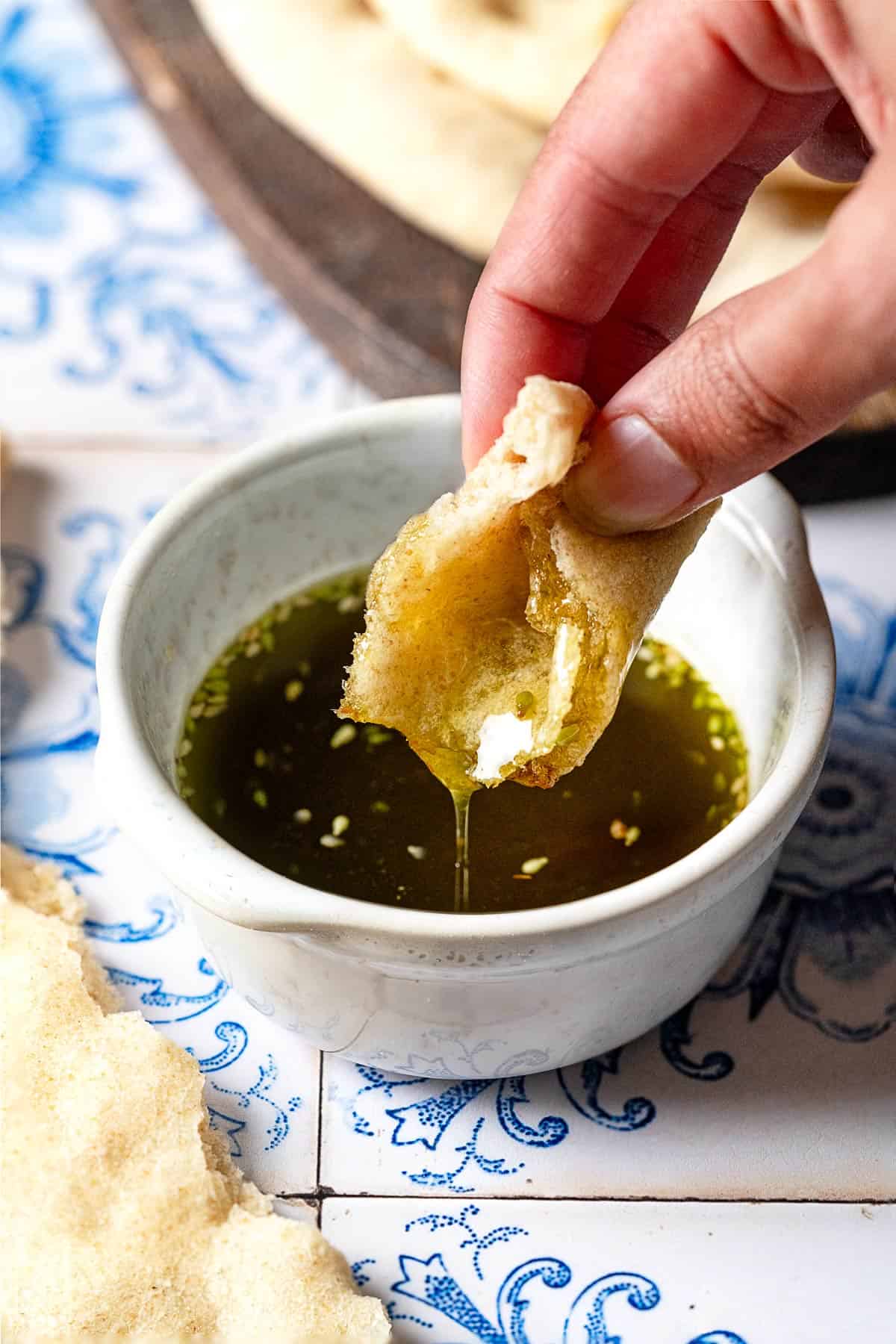
What to Serve with Taboon
Taboon bread is the star in Palestinian musakhan, considered the national dish of Palestine. To make musakhan, slather the bread with olive oil-caramelized onions, sumac and top with pieces of broiled chicken.
But you can use taboon bread just like you would with any other bread. Scoop up spreads and dips like labneh or hummus. Use it as a base for wraps and pile on spinach, onions, and cheese. Or simply use it for breakfast to dip in olive oil first then za’atar. Hot tea is always served with taboon for breakfast.
More Bread Recipes
Browse all Mediterranean recipes.
Visit Our Shop.
Save When You Bundle Our Best-Selling Olive Oil Collection!
Four signature extra virgin olive oils designed for everyday use.
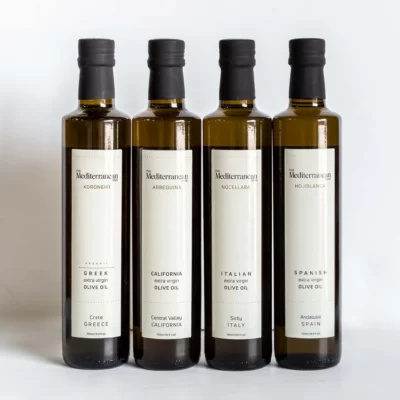
Taboon (Palestinian Flatbread)
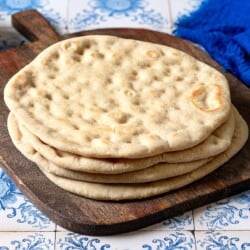
Ingredients
- 1 1/3 cup (11oz) warm water
- 2 1/2 teaspoons instant yeast
- 1 1/2 teaspoons sugar
- 3 cups (360g) all purpose flour
- 1 cup (120g) whole wheat flour
- 1 1/2 teaspoons sea salt
- 2 tablespoons extra virgin olive oil, plus more for brushing
- 1 handful river rocks or pebbles, scrubbed clean and thoroughly dried (optional, see note)
Instructions
- Activate the yeast. In a measuring cup, add the warm water, yeast, and sugar and stir to combine. Set aside until the mixture is frothy, about 10 minutes.
- Make the dough. Set up a a stand mixer with the dough hook. Use a sifter or fine mesh strainer to sift in the flours and salt into the mixing bowl, tapping with the palm of your hand until they fall in the bowl. Add the olive oil and mix on low speed to combine. With the mixer on low speed, gradually add the yeast mixture and knead until the dough is soft and a bit sticky, 6-10 minutes.
- Proof the dough. Transfer the dough to a bowl and brush it with one teaspoon of extra virgin olive oil. Cover with a damp towel and leave it in a warm spot to proof and double in size, 60 to 90 minutes.
- Get ready to bake. Remove the top rack so you can easily access the center rack once it’s hot. Preheat the oven to 500°F, or the highest temperature the oven can go. If you're using pebbles or rocks, place the cleaned and completely dried pebbles on a tray and place in the oven to heat for 30 minutes. Otherwise, place a cast iron pan in the oven for 10 minutes or to heat.
- Rest the dough. Once your dough is doubled in size, cut into 4 equal portions (about 200 grams each). Shape each portion into a ball, cover with a damp towel, and set aside to rest for 10 minutes.
- Roll the dough (one piece at a time). Lightly dust your work surface with flour. Use a rolling pin to roll out one piece of dough at a time into a circle shape about 10 x 10-inches, then use your fingertips to dimple dough. This prevents air pockets from forming.
- Bake the dough. Carefully place the stretched dough round onto the hot rocks (or directly in the preheated pan) and bake for 5 minutes until slightly golden and the dimples form.
- Cover and repeat. Use tongs to carefully transfer the cooked bread to a large pan and cover with a dry kitchen towel to trap the heat, ensuring the bread stays soft and pliable. Repeat with the remaining pieces, cooking one at a time.
- Enjoy or store. Enjoy immediately, or wrap and store on your counter for 3 days or freezer for up to 1 month.
Notes
- To prepare the pebbles/rocks: Use river rocks that are about 1 to 2 inches or pebbles about the size of a marble, or a combination of sizes. They can be found at homeware and garden stores. Just make sure they are natural and free of colors and chemicals. Wash them very well with soap and warm water. Set aside in one layer to completely dry. Any moisture in the rocks can cause them to crack and pop once exposed to heat, so it’s important to dry them completely before use.
- To store: Enjoy Taboon the day it is made or store in a tight and closed bag so it stays soft for up to 3 days. Gently warm in your oven or toaster before enjoying.
- To freeze: Store in a freezer-safe bag up to one month. Thaw on your counter, still wrapped in the freezer or plastic bag. Warm the thawed bread in your oven just until soft and pliable. Alternatively, thaw in a 350°F oven straight from frozen.
- Be sure to check the expiration date on your yeast. If it doesn’t bubble when you mix it with water, it is likely old and the dough won’t rise.
- Visit our shop to browse quality Mediterranean ingredients including olive oils, honey, jams, and spices.
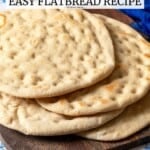
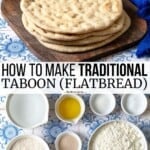
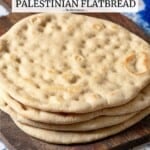
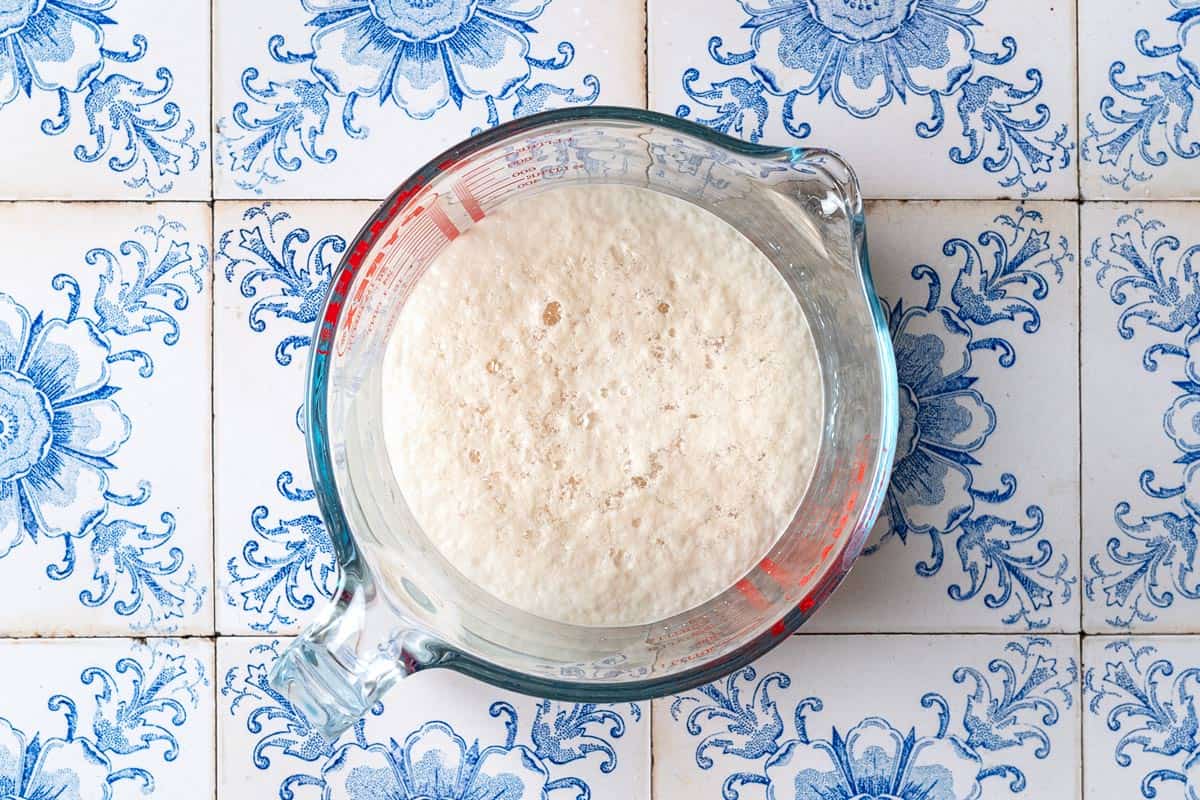
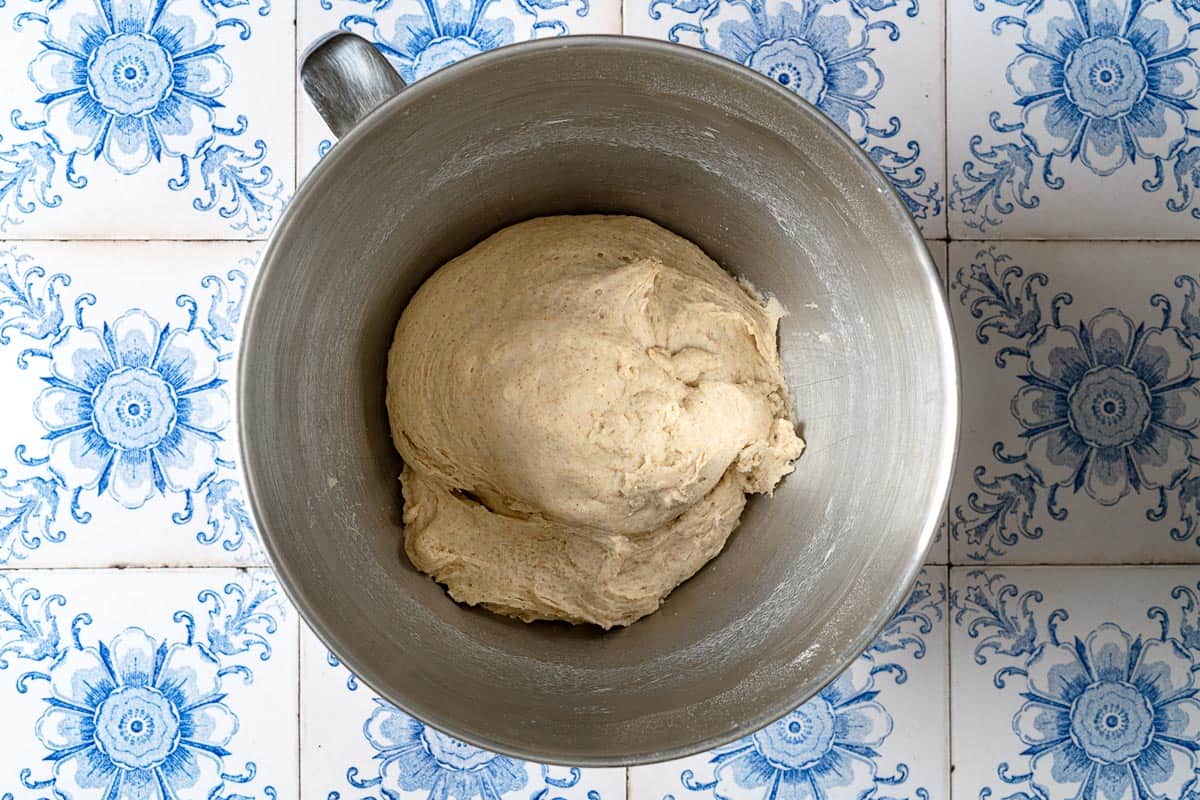
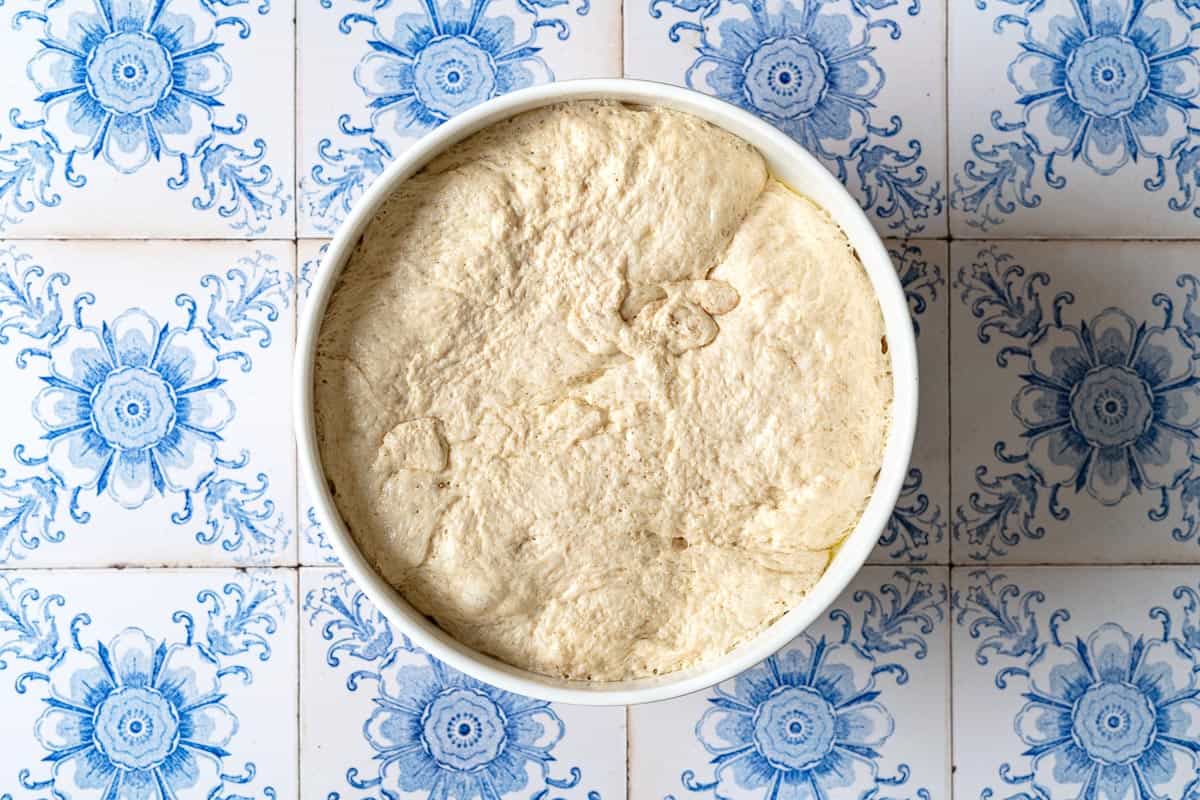
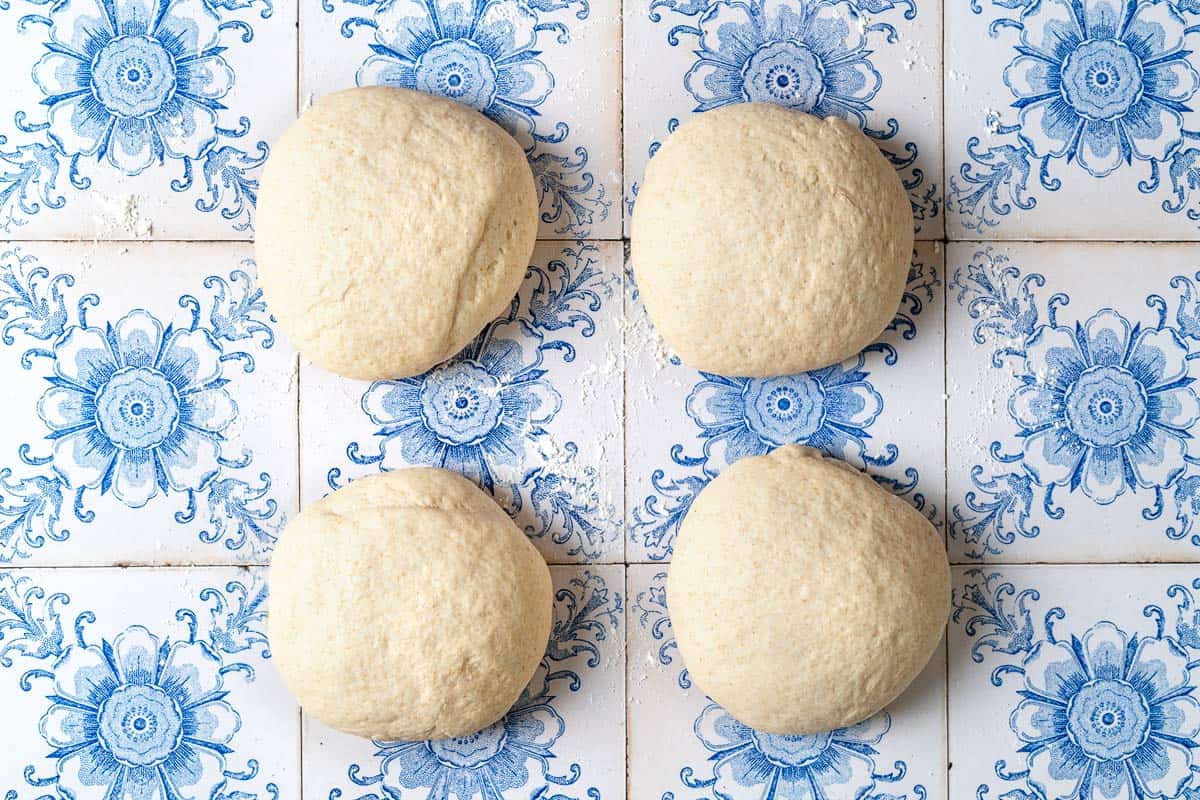
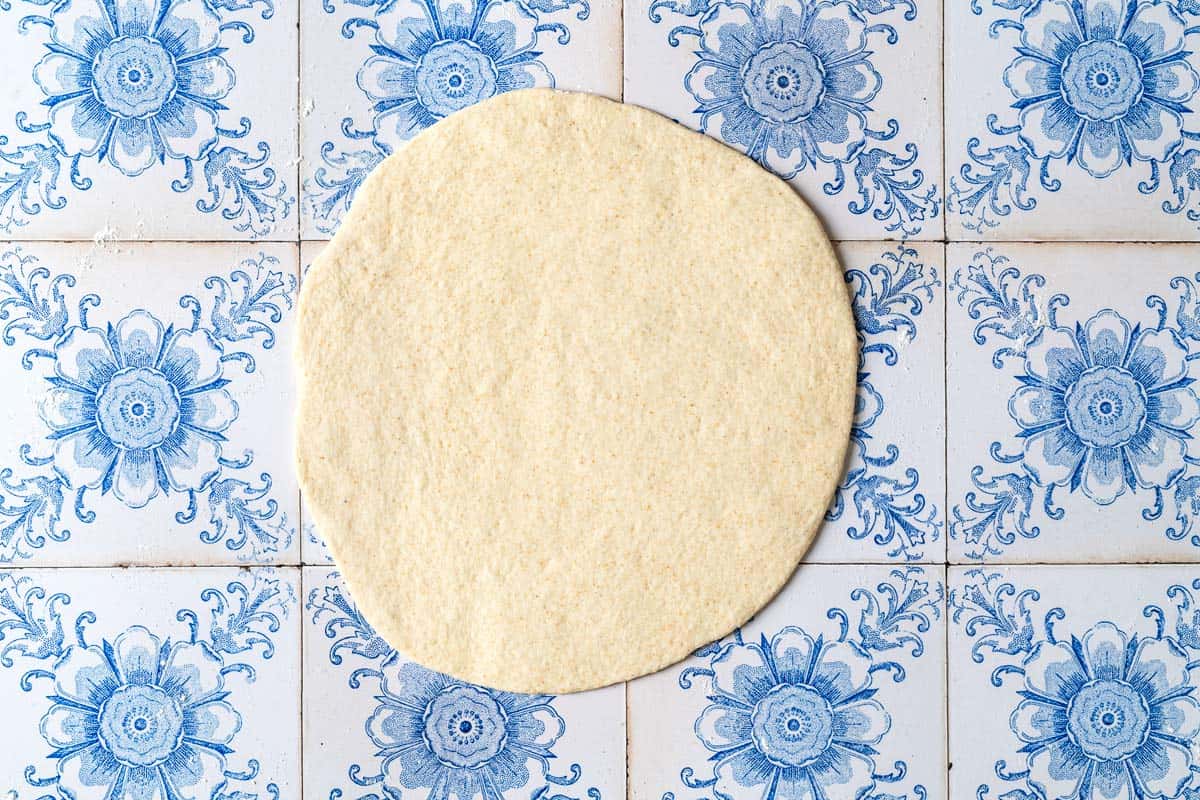
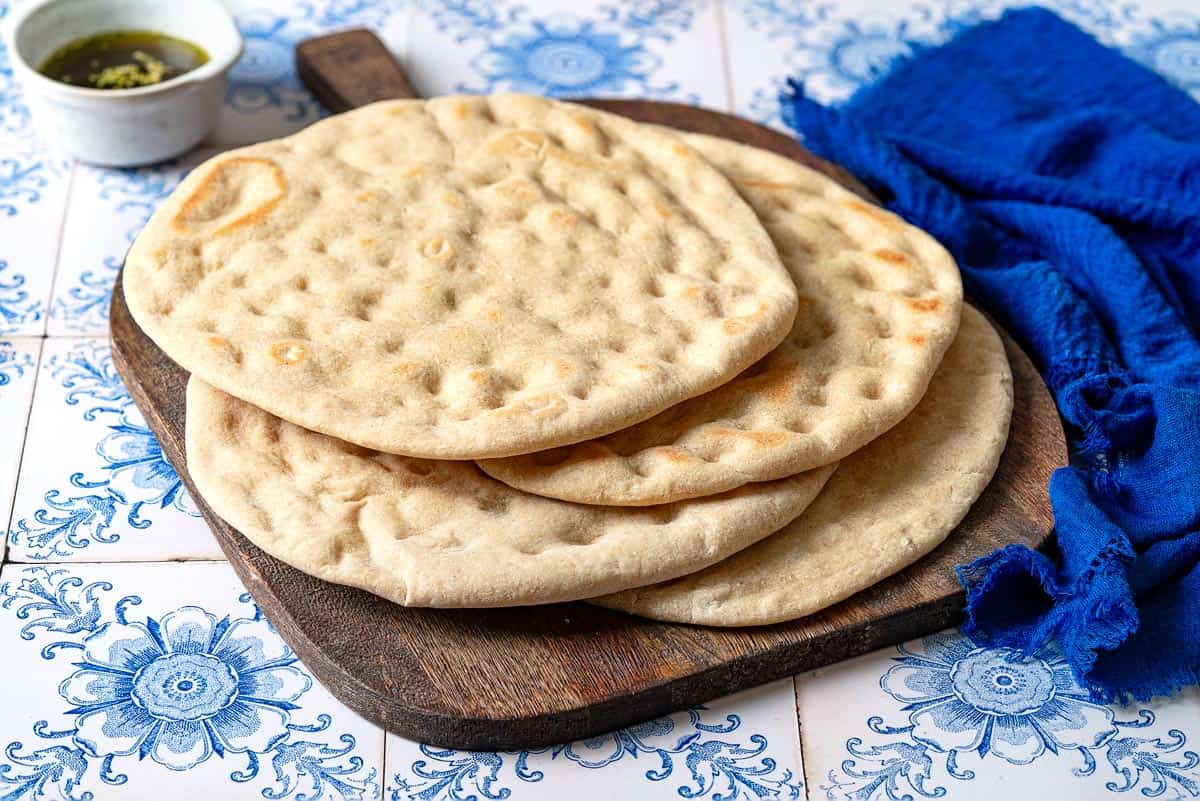
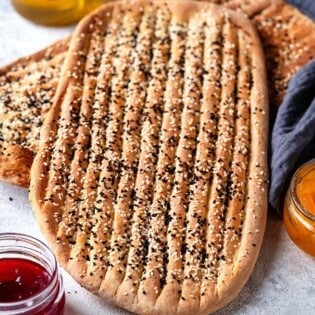
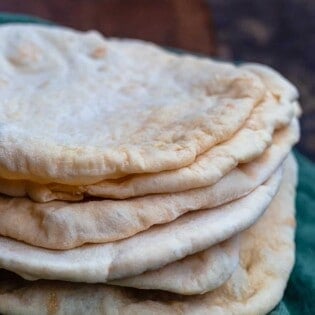

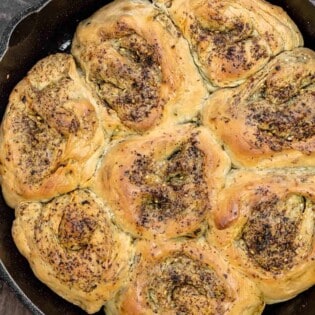
Can a pizza stone be used to bake this on?
Hi, Ruth. That’s not something we’ve tried before, but I don’t see why not.
Hi, I was just wondering if you knew if you can make this with whole wheat flour in place of the all purpose flour? Thank you for the recipe!
Hi, Sara. I believe you can make this entirely with whole wheat flour, but it’s not something we’ve actually tested. If you decide to give it a try, please stop back and share your thoughts!
Curious why the calorie content is so high at 535?
Hi, Michelle. The higher calorie count here can mostly be attributed to the flour.